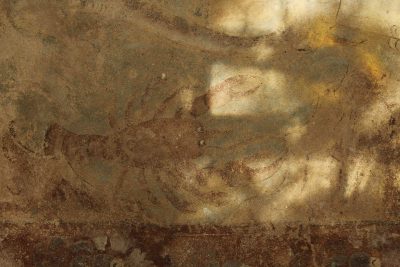
Medieval Lobster, Thurton (2019)
STATEMENT I work with the materials in my local environment. My practice is largely photographic, and much of it addresses the distinctive character of the woodlands, wetlands and wildlife of rural Norfolk. Animals figure in the work as often by their pictorial absence as by their presence. My interest is in spaces shaped and shared by human and nonhuman animals, but where neither is necessarily visible. The aim of the work is to give contemporary form to the experience of moving through these environments. Here, the material texture of place is what counts, marking out a kind of haptic space that is confined, pressing and immediate. Ron Broglio has aptly described this kind of embodied engagement with landscape as the “disjoined conjunction of stumbling and seeing.” I’ve taken to calling it fieldwork.
BIO Steve Baker is a Norwich-based artist and writer. He is Professor of Research for Art and Media at the University of Derby, and Emeritus Professor of Art History at the University of Central Lancashire. He is an artist-member of OUTPOST, the Norwich 20 Group and the national Land2 research network, and is an associate of the Melbourne-based AEGIS research network for arts and ecology. Since 2010 his work has been exhibited in the UK, USA, Australia and Europe, and has featured in major animal-themed museum shows in Poland and Germany. His solo exhibition Fieldwork (curated by Maria Lux) was held at the University of Sheffield in 2019, and in 2020-21 works from his Scapeland series will be included in As Kingfishers Catch Fire at the Limerick City Gallery of Art. Baker’s academic writings over the past twenty-five years have contributed to the development of the field of animal studies in the arts, humanities and social sciences. His books include Picturing the Beast, The Postmodern Animal, and most recently Artist|Animal. Selected writings have been translated into seven languages, and his work is included in Berg’s The Animals Reader: The Essential Classic and Contemporary Writings, and in the Routledge Handbook of Human-Animal Studies.